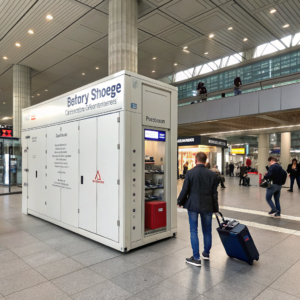The Lifespan of Solar Panels: How to Extend Their Usage?
•
Worried your solar investment might degrade too quickly? Understanding panel longevity helps maximize your return on this important home improvement.
Quality solar panels typically last 25-30 years while maintaining 80-90% efficiency, with proper maintenance and installation extending both lifespan and performance.
While solar panels are designed for decades of service, several factors determine how long they'll continue producing optimal power output. Let's explore what affects durability and how to get the most from your system.
Durability of Solar Panels: Impact on Return on Investment
Concerned your solar panels won't last long enough to pay for themselves? The long lifespan actually makes solar one of the most durable home investments.
Solar panels typically pay for themselves in 6-10 years while continuing to produce free electricity for 15-20 more years, delivering 3-4x return on investment over their lifespan.
Understanding the Financial Longevity of Solar
-
Payback Period Components
- Average system cost: $15,000-$25,000 after incentives
- Annual savings: $1,200-$2,500 depending on location
- Most systems pay for themselves by year 8
-
Long-Term Performance Year Range Expected Efficiency Financial Impact 1-10 95-100% Payback period 11-20 85-95% Pure savings 21-30 80-85% Bonus years -
Warranty Protection
- 25-year performance guarantees standard
- 10-12 year product warranties on equipment
- Many systems outlast warranty periods
"Homeowners who install solar typically see 20+ years of reliable energy production after payback, effectively locking in electricity rates" - Solar Energy Industries Association
Factors Affecting Solar Panel Lifespan: From Materials to Installation
Why do some solar panels fail while others last decades? The difference comes down to five critical quality and installation factors.
Solar panel longevity depends on: 1) Cell quality (mono vs poly), 2) Frame durability, 3) Weatherproofing, 4) Proper installation, and 5) Local climate conditions.
The Lifespan Equation: What Matters Most
-
Material Quality Differences
- Monocrystalline: 25-30 year lifespan
- Polycrystalline: 23-27 year lifespan
- Thin-film: 15-20 year lifespan
-
Environmental Factors Condition Impact on Longevity High heat Accelerates degradation Coastal salt air Corrodes components Heavy snow Risks microcracks Hail Can damage glass -
Installation Best Practices
- Proper roof penetration sealing
- Correct tilt angle for self-cleaning
- Adequate airflow underneath
- Quality racking system
Pro Tip: Always choose panels with salt spray certification (IEC 61701) if living within 5 miles of coastline.
How to Maintain Solar Panels to Extend Their Lifespan?
Want to squeeze every possible watt from your solar investment? Simple maintenance can add years to your system's productive life.
Extend solar panel lifespan by: 1) Annual cleaning, 2) Vegetation management, 3) Regular inspections, and 4) Monitoring system performance for drops.
Maintenance Checklist for Maximum Longevity
-
Cleaning Procedures
- Frequency: 1-2 times yearly (more in dusty areas)
- Method: Soft brush, deionized water, dawn-to-dusk cleaning
- Avoid: Pressure washers, abrasive materials
-
Performance Monitoring
- Check inverter display weekly
- Review monthly production reports
- Investigate >15% output drops
-
Preventative Measures
- Trim overhanging branches
- Remove snow buildup gently
- Check for animal nests
-
Professional Services
- Electrical inspection every 5 years
- Thermal imaging to detect hot spots
- Structural assessment after extreme weather
Best Practice: Combine DIY visual inspections with professional maintenance every 3-5 years for optimal results.
Conclusion
With proper selection, installation and maintenance, solar panels can deliver clean energy for 25-30 years - making them one of homeownership's most durable investments.






